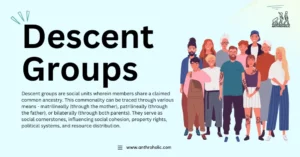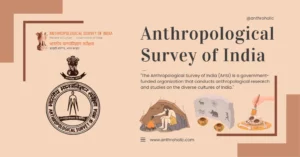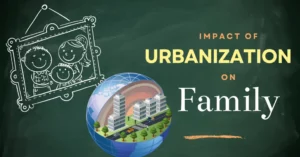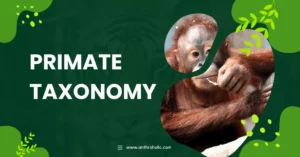AI Answer Evaluation Platform Live Now. Try Free Answer Evaluation Now
Food Sharing
Food sharing is a vital cultural and social activity prevalent in many societies worldwide. In anthropology, the concept of food sharing extends beyond merely giving or receiving food. It reflects complex social norms, interpersonal relationships, social stratification, and symbolic meanings, forming a basis for exploring the interplay between culture, society, and human behavior [1].
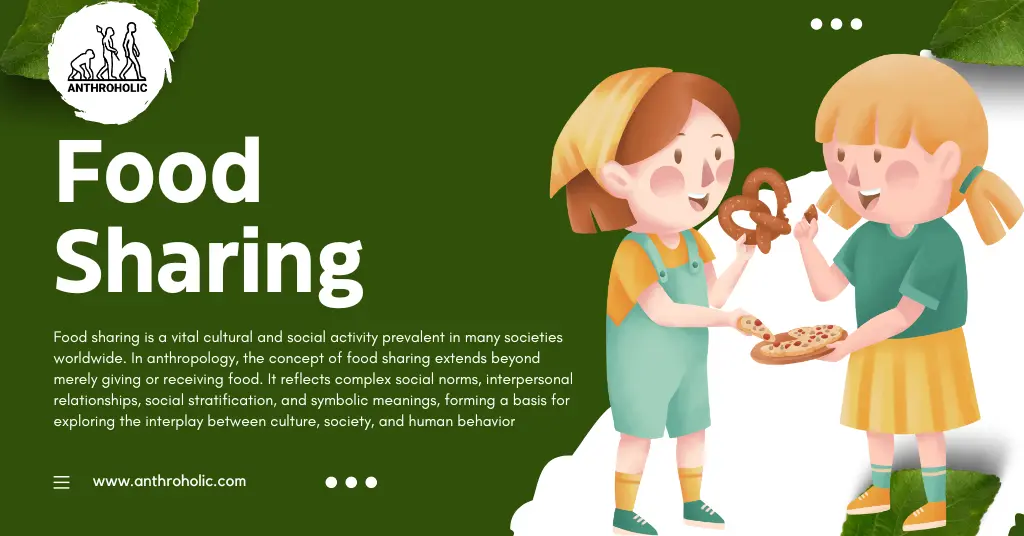
The Evolution of Food Sharing
Anthropologists suggest that food sharing is an evolutionary behavior adopted for survival and social cohesion. The earliest forms of food sharing among humans were primarily observed among hunter-gatherer societies.
Hunter-gatherer Societies
Hunter-gatherer societies, who relied on hunting and foraging for subsistence, used food sharing as a mechanism to distribute food evenly among group members, ensuring collective survival [2]. Food sharing also created and sustained social bonds, functioning as a form of social insurance against future food shortages.
Agricultural Societies
With the advent of agriculture, the concept of food sharing evolved significantly. Unlike hunter-gatherers, who shared food on a daily basis, agricultural societies shared food during special occasions and ceremonies, reflecting shifts in social structures and cultural practices [3].
| Society Type | Regularity of Food Sharing |
|---|---|
| Hunter-gatherer | Daily |
| Agricultural | Occasional (Special events) |
The Cultural Significance of Food Sharing
Food sharing, as a cultural phenomenon, plays a vital role in reinforcing social relationships and symbolizing unity.
1. Reinforcement of Social Relationships
- Reciprocity: Reciprocity is a common principle in many food-sharing societies, where the act of giving food expects a return, either immediately or in the future, creating a social bond [4].
- Kinship and Affinity: In many societies, food sharing is a symbolic gesture that signifies kinship and affinity. It is often seen during marriage ceremonies, religious festivals, or other cultural rituals [5].
2. Symbolization of Unity
Sharing a meal is often regarded as a ritual of unity, fostering a sense of togetherness and community spirit. It is considered an act that transcends individual interests and emphasizes communal solidarity [6].
The Anthropology of Modern Food Sharing
In contemporary societies, the traditional norms of food sharing have been adapted and reinterpreted in novel ways. Here are two instances of modern food sharing practices:
- Shared Meals and Dining Out: Eating out in a restaurant often involves the sharing of meals, where dishes are ordered collectively and consumed as a group [7].
- Food Banks and Charitable Feeding: Modern societies have institutionalized food sharing through food banks and charities. These organizations collect surplus food and distribute it to those in need, reflecting a broader sense of social responsibility [8].
Anthropological Theories in Food Sharing
Theoretical perspectives in anthropology provide more in-depth explanations about why and how food sharing occurs across different cultures and societies.
1. Kinship Theory
The kinship theory posits that food sharing primarily occurs among kin [9]. By sharing food with family members, individuals ensure the survival and welfare of their kin, which indirectly promotes their own genetic continuity.
2. Reciprocal Altruism
Reciprocal altruism suggests that food sharing is based on the expectation of reciprocation [10]. In this view, sharing food with others creates a social debt that is expected to be returned in the future.
3. Social Exchange Theory
The social exchange theory proposes that food sharing represents a form of social exchange that reinforces social relationships and social status [11]. Those who share more food are often perceived as generous and influential, contributing to their social standing within the community.
Role of Food Sharing in Global Food Security
Food sharing also has implications for global food security. This practice can be a means to alleviate food scarcity and ensure food availability for the most vulnerable. Sharing food leftovers, for instance, can contribute to waste reduction and improve overall food utilization [12].
Modern Food Sharing Platforms
The internet and digital technology have revolutionized the concept of food sharing. Platforms like OLIO and FoodCloud connect individuals and businesses with surplus food to people in need or to organizations that can distribute it effectively. Such initiatives, in addition to reducing food waste, also promote social connectedness and community building [13].
Conclusion
Food sharing, as examined by anthropology, offers insights into cultural, social, and symbolic structures within societies. It transcends the basic act of giving or receiving food, encapsulating a wide range of human interactions, values, and beliefs.
References
[1] Mintz, S., & Du Bois, C. (2002). “The Anthropology of Food and Eating”. Annual Review of Anthropology.
[2] Kaplan, H., & Gurven, M. (2005). “The Natural History of Human Food Sharing and Cooperation”. The Evolution and History of Human Populations in South America. https://doi.org/10.1002/9781118900772.etrds0133
[3] Dietler, M., & Herbich, I. (1998). “Habitus, Techniques, Style: An Integrated Approach to the Social Understanding of Material Culture and Boundaries”. In The Archaeology of Social Boundaries.
[4] Mauss, M. (1954). “The Gift: Forms and Functions of Exchange in Archaic Societies”.
[5] Lévi-Strauss, C. (1969). “The Culinary Triangle”. Partisan Review.
[6] Sahlins, M. (1972). “Stone Age Economics”.
[7] Bell, D., & Valentine, G. (1997). “Consuming Geographies: We Are Where We Eat”. Routledge.
[8] Poppendieck, J. (1999). “Sweet Charity? Emergency Food and the End of Entitlement”. Penguin Books.
[9] Hamilton, W.D. (1964). “The Genetical Evolution of Social Behavior”.
[10] Trivers, R.L. (1971). “The Evolution of Reciprocal Altruism”. The Quarterly Review of Biology.
[11] Homans, G.C. (1961). “Social Behavior: Its Elementary Forms”. Harcourt, Brace & World.
[12] Parfitt, J., Barthel, M., & Macnaughton, S. (2010). “Food Waste within Food Supply Chains: Quantification and Potential for Change to 2050”. Philosophical Transactions of the Royal Society B: Biological Sciences.
[13] Davies, A.R., Edwards, F., Marovelli, B., Morrow, O., Rut, M., & Weymes, M. (2017). “Making Visible: Interrogating the Performance of Food Sharing Across 100 Urban Areas”. Geoforum.
